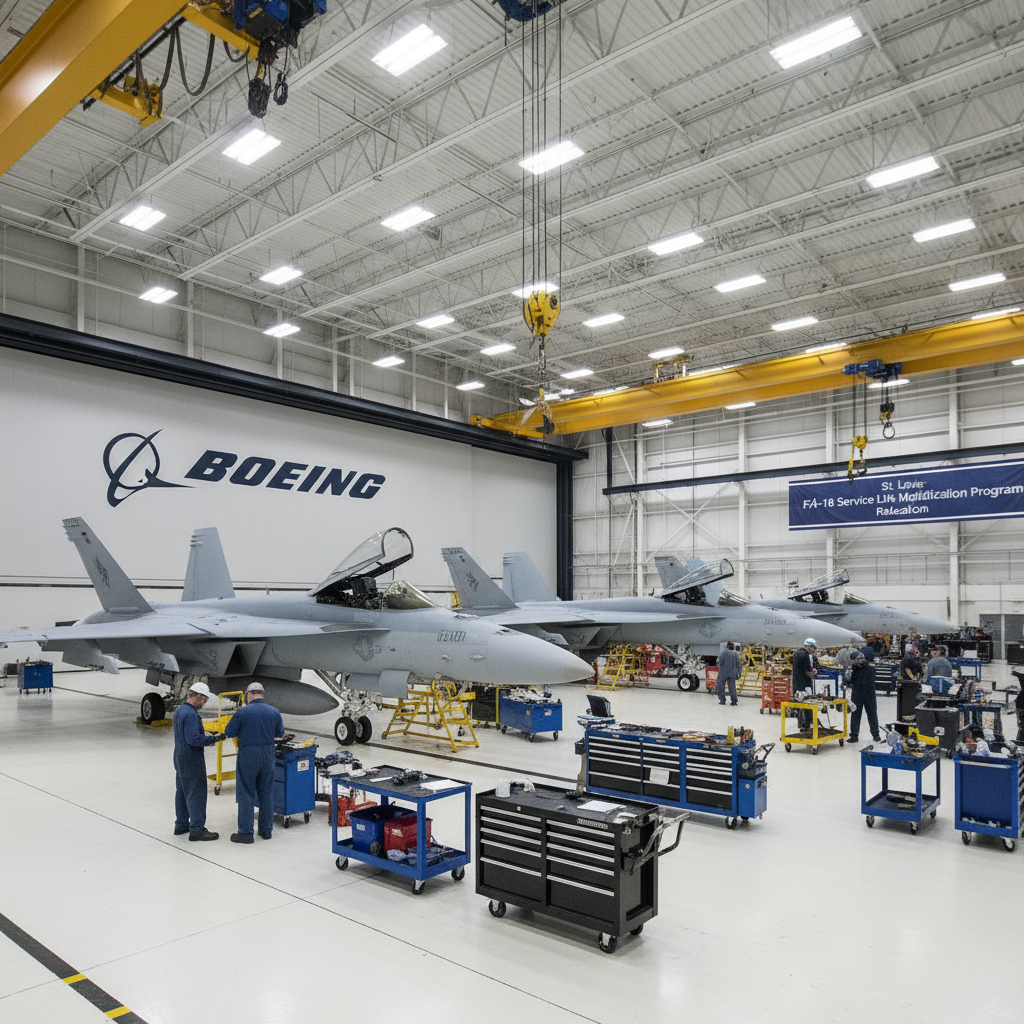Physical Address
304 North Cardinal St.
Dorchester Center, MA 02124
Physical Address
304 North Cardinal St.
Dorchester Center, MA 02124
Global aviation news tracker
Global aviation news tracker

Boeing is shifting Super Hornet sustainment work as part of a wider defense footprint realignment.
On September 25, 2025, Boeing confirmed it is relocating F/A-18 Super Hornet Service Life Modification (SLM) work that had been centered in the St. Louis region to a new facility; the company did not disclose the new site’s location. The move is billed as a step to optimize Boeing’s defense production footprint and keep the U.S. Navy’s frontline fighter fleet mission-ready.
The SLM program extends the operational life of F/A-18 Super Hornet aircraft for the U.S. Navy, allowing carrier air wings to remain capable amid evolving threats and budget cycles. Service Life Modification work typically involves structural inspections, life-extension kit installation, and systems updates that let the platform fly longer without major design changes.
Relocating SLM work can speed throughput, concentrate specialized tooling and technicians, and reduce overhead. For Boeing, consolidating sustainment tasks is also part of broader efforts to align industrial capacity with Navy sustainment schedules and future modernization programs. For sailors and maintainers, the priority is continuity: aircraft availability and predictable maintenance cycles.
Boeing has framed the change as an efficiency and sustainment play rather than a capability shift: the aircraft remains the same F/A-18 Super Hornet platform, and the Navy’s requirement for extended service life continues. The company and the Navy will need to manage workforce transitions and logistics while ensuring no gap in depot-level maintenance capacity.
Expect follow-up announcements if Boeing names the new facility or details workforce impacts and timelines. Until then, the relocation is a clear signal that legacy fighter sustainment remains a strategic part of the U.S. defense industrial base.